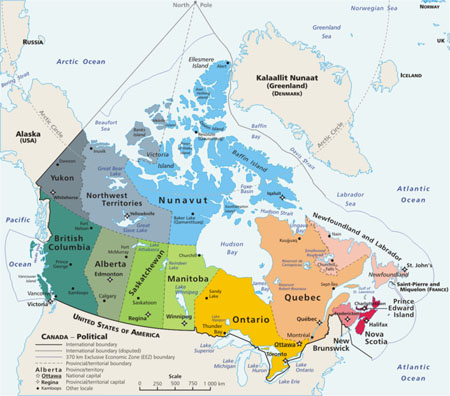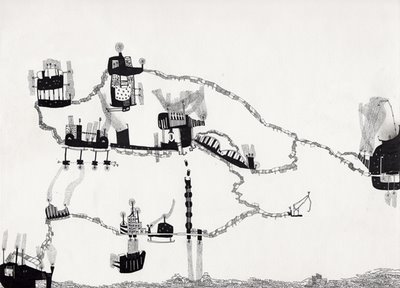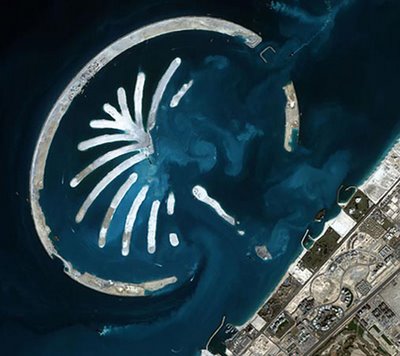 [Images: The book and one of its authors, Simon Sellars].
[Images: The book and one of its authors, Simon Sellars].
Simon Sellars runs Ballardian from his home in Melbourne, Australia. Our shared interest in J.G. Ballard led to Simon’s interviewing me this past summer about architecture, urban space, psychopathology, international airport departure lounges, and Ballard’s novels. In the process, however, our conversation came to include a great many things not included in the final interview; and one of those things was Simon’s recent work as co-author, with John Ryan and George Dunford, of The Lonely Planet Guide to Micronations. BLDGBLOG and Leah Beeferman had only just announced their own micronation – The Helicopter Archipelago – and so a new interview began to take shape. The tables were turned. I was asking the questions.
The results appear below.
• • •BLDGBLOG:
How did the book come about? Did you pitch it to Lonely Planet, or did they come looking for you?
Simon Sellars: The book is the brainchild of John Ryan, who invited George Dunford and myself to co-author it. When I worked in-house at Lonely Planet as an editor, I overheard John talking about a pitch he was about to present to the bosses – regarding a book about micronations. When I later heard that the proposal had been given the green light, I pestered the poor bastard for about six months until he let me work on it. I began by hammering John with heavy emails about the political significance of micronations until he finally said, “Simon, we want it to be funny.” Fortunately, there are a lot of laughs in the micronational world, so it was no problem toning down the revolutionary rhetoric.
BLDGBLOG: What’s the origin of your own interest in micronations?
Sellars: It comes from reading science fiction as a kid and getting right into the concept of parallel worlds and alternative universes. Anything that distorts or reflects or comments on the “real” world – or sets up an alternative world – sends me into an orgy of navel gazing. This can extend to even the most everyday scenarios. To give you an example: I’m not a huge sports fan, but I’m fascinated by the fact that American football sprang from rugby union. Actually, American football is a distortion, a twisted mirror image of rugby – amplified, stretched and extrapolated to degrees never thought possible by stuffy British types – in everything from the rules to the tactics to the uniforms. For similar reasons, although I’ve never been there, Canada fascinates me – as a parallel USA.
BLDGBLOG: Which country would be the distortion in that case?
Sellars: That’s tricky. A lot of what I know about Canada has been learnt from South Park and David Cronenberg films. Cronenberg presents it as a parallel universe, recognisably North American, but cool, detached, ironic – America on sedatives. Whereas South Park paints it as crass, loud and derivative. And Canada did host the World Rock Paper Scissors Championship, a truly lame sporting competition worthy of any micronation. So, let’s vote for Canada as the distortion. But I also remember reading a recent poll that claimed 38% of Americans wanted the US to annex Canada, and then reading an article that said British Canadians – aside from the more well-known Quebec separatists – wanted to secede from Canada. The US wants to go macro, Canada wants to go micro – polar opposites, then?
 [Image: Canada].
[Image: Canada].
BLDGBLOG: Have you ever declared your own micronation?
Sellars: Yes. I grew up in the suburb of Bentleigh, in Melbourne, Australia. It was an exceedingly boring place, like a retirement village – it seemed like I was the only teenager around at times. So I founded the Independent Republic of Bentleigh, declared myself President, and claimed the whole of Bentleigh as territory. Our national anthem was “We Can’t Be Beaten,” a song by the toughest band in the land, Rose Tattoo.
BLDGBLOG: What happened to it?
Sellars: We were beaten – the IRB was invaded by Poland. The Polish kid next door already hated me, but when he saw me poncing up and down the back yard draped in my IRB flag, he was enraged even more than usual. He jumped over the fence, punched me in the mouth and stole my lunch money – and that was all the IRB’s assets gone, just like that. He also stepped on my toy tanks and melted my plastic soldiers with a cigarette lighter, which meant the IRB had no defence force, and that was the end of it, really. My mother banned me from starting up a micronation ever again, unless I could back it up with sufficient armoury and investment capital, which of course I never could, being a very lazy kid.
BLDGBLOG: Are you still plotting revenge…?
Sellars: No, no – it’s fine. He was stronger, smarter, more committed and far more organised than me. It’s a good lesson for any start-up nation: you will be at the mercy of predators, so you’d best bulk up.
 [Images: The Republic of Kugelmugel (top); former President of the Republic of Saugeais, Gabrielle Pourchet, stands on her well-guarded border (bottom-left); and a postage mark from Akhzivland (bottom-right)].
[Images: The Republic of Kugelmugel (top); former President of the Republic of Saugeais, Gabrielle Pourchet, stands on her well-guarded border (bottom-left); and a postage mark from Akhzivland (bottom-right)].
BLDGBLOG: Returning to the book, I’m curious if you found the travel guide format a bit limiting. Was there more to say beyond climate, history, population, and so on; or was the format actually a liberating way to organize your research?
Sellars: It was liberating. You could write a heavy political treatise on the significance of micronations, but who would read it? Lonely Planet certainly wouldn’t publish it. Our mantra was always to focus on places that travellers could actually visit – that is, micronations with actual land, rather than cybernations, or micronations on the moon – so the guidebook format seemed ideal. These places set themselves up as real countries, for the most part, and a good proportion of them take their statehood very seriously, so it was an interesting exercise to outline their “visa requirements” and their laws and regulations as a way of testing the validity of their claims.
Take the Empire of Atlantium: it’s described in the book as a “secular humanist utopia” that advocates a single world government, abortion rights and legalized euthanasia. By according the Empire the same weight (and the same text headings) as, say, the Netherlands in Lonely Planet’s Western Europe guidebook, we can determine whether it really is, as Atlantium’s Emperor Georgius claims, “a unique type of transitional progressive political and social group entity that maintains the forms and structures of a sovereign state as a means of giving concrete form to its general ideology, and as a way of wrapping up a diverse range of messages in a form that is easily understood and digested.”
So, does it have population of more than one? Yes. A currency? Yes. A citizenship program? Yes. A constitution? Yes. A postal agency? Yes. A flag? Yes. A pompous official portrait of the head of state? Yes. Has it been at war? Yes. Can you visit it? Yes. Does it have an eclectic socially tolerant agenda? Yes. Then it certainly does “maintain the forms and structures of a sovereign state in order to present a diverse range of messages” – much like the Netherlands, for that matter.
We just aimed for the facts, and figured the rest would follow – we’ll leave the grey areas for Wikipedia’s sandbox.
 [Images: Kevin Baugh, President of the Republic of Molossia (top-left); King Adam from the Sovereign Kingdom of Kemetia, shaking hands with his Minister of Security, Samuel Simpson-Crew (bottom-left); and King Nicholas, Chav Slayer, of the Copeman Empire (right)].
[Images: Kevin Baugh, President of the Republic of Molossia (top-left); King Adam from the Sovereign Kingdom of Kemetia, shaking hands with his Minister of Security, Samuel Simpson-Crew (bottom-left); and King Nicholas, Chav Slayer, of the Copeman Empire (right)].
BLDGBLOG: It seems many of the kings, queens, prime ministers, etc., featured in the book are actually teenage boys, or eccentric older men, many of whom have goatees.
Sellars: Yes. It does appear to be an especially male enterprise, starting up your own micronation. It’s like piecing together a model train set, I think – that common little-boy fantasy of building, managing and controlling every single aspect of a miniature world. But then again, little girls have dollhouses and tea sets, and that’s a virtual world as well, with its own rules for social interaction.
BLDGBLOG: John’s introduction suggests that many of these micronations have been run as “enormous, time-consuming, intricate jokes.” However, I’m curious what the book might have been like if you had included the “separatist cults,” white supremacists, and “lunatic fringe” that you chose to exclude. Did you ever want to write-up these other, less humorous micronations – multinational private security firms, corporate tax havens, seaborne pirate states off Somalia – or would that have made the book too political?
Sellars: Ah yes, the good old lunatic fringe. Quite often these types of micronations are not very well documented, and – at least the ones we came across – were riddled with incoherent policy and ill-thought out constitutions, with zero recognition from either the real world or the micronational world. I’m guessing that if a white-supremacist micronation came along that was intelligently modelled – and I’m talking geographically, of course – and that had interactions with other micronations, even if it was to invade them – plus some kind of tangible effect in the real world, such as being invaded by a real nation – then we might consider including it. It’s not enough to declare yourself a nation – you have to interact in some way, preferably for the benefit of others, or at least in a libertarian manner.
As it is, the micronations we’ve included have had some kind of independently verified interaction with a third party. Prime examples include Sealand, which was engaged in a diplomatic crisis with Germany after surviving an attempted coup, which successfully fended off the UK’s claims on its territory, and which now has national mini-golf, football and slot-car teams that compete in international competition; the Republic of Molossia, which is a world leader in micronational affairs, having inaugurated the Intermicronational Olympic Movement and hosted the first Intermicronational Olympic Games; and the Hutt River Province, which seceded from Australia after a dispute over wheat quotas, and now exports wildflowers, agricultural produce, stamps and coins, and continues to have low levels of interaction with the Australian government.
In the end, the mock-guidebook format sealed the selection criteria. On one level you could argue that the Waco compound was a micronation, although as far as I can tell they didn’t print stamps, or formally elect a head of state, or draw up a constitution. I’m certainly interested in exploring the parameters outlined in your question, but that would have required a very different methodology. Edwin Strauss has covered it to some extent, in his book How to Start Your Own Country, which takes a pre-9/11 approach to micronationalism, including advocating the deployment of “basement nukes” to get your own way.
The bottom line is that this is a dangerous area for a travel publisher to get into – and we are not white supremacists, cultists, or terrorists, so it would be a particularly bitter pill to swallow just for the sake of being inclusive.
 [Images: Emperor Georgius II of the Empire of Atlantium (top-left); citizens of the Kingdom of Elleore (bottom-left); and King Leo III of Elleore (right)].
[Images: Emperor Georgius II of the Empire of Atlantium (top-left); citizens of the Kingdom of Elleore (bottom-left); and King Leo III of Elleore (right)].
BLDGBLOG: What kind of future do you see for the micronational model? Tourist gag or the next phase of political sovereignty?
Sellars: Surely gated suburbs, housing only the filthy rich, are the future of micronationalism. Gated communities have their own security forces, their own infrastructure… it must be only a matter of time before the most powerful and self-contained of them secede. Going by this model, Johannesburg – by all accounts – will be composed of nothing but micronations.
BLDGBLOG: Any plans for a Micronations 2?
Sellars: The book is apparently selling quite well, so we’ll keep our fingers crossed. I hope there’ll be a sequel, for John’s sake – he showed a lot of vision to get this happening, or to at least pitch the idea well before the recent television interest in micronations and some time before the current fad for fake guidebooks. This recent media attention has only validated that vision. Actually, I hope the book inspires more people to form their own micronations, so that we have no choice but to write a follow up – I think the urge is strong, if the popularity of Max Barry’s Nation States site is any indication.
BLDGBLOG: Finally, how does this work intersect with your interest in J.G. Ballard?
Sellars: Ballard highlights the social Darwinism that occurs when communities are completely mediated by technology – whether it’s the motorway feeder roads in Crash, the business park in Super-Cannes, the patch of underpass in Concrete Island, the urban war zones in High-Rise. All of these settings are implicitly micronational – and explicitly in Ballard’s latest book, Kingdom Come, in which a shopping centre is overrun by consumers, sealed off by paramilitary goons, and declared an independent republic.
Ballard’s protagonists are forever setting up psychopathological thought labs, where people are free to test the limits of their perversions within controlled conditions, with the outside world fading into a background blur. Quite often their actions are gross inversions of real-world scenarios, and by stepping into this surrealistic inverse ratio, we are really seeing ourselves – and the world around us – reflected back at us. That’s the classic gambit of science fiction, and Ballard’s trick is to situate it in the present day, rather than the future.
So, your typical Ballardian scenario is not a million miles away from Molossia, which has formulated its very own space program, consisting of the Rufus T. Firefly Memorial National Observatory (a single home telescope) and a probe launch – the “Hypérion Balloon Flight and Aerial Survey” – designed to photograph the nation from the upper atmosphere. Sadly, the probe, a camera attached to 40 balloons, was destroyed during take off, when it got stuck in a tree. Later, their home-made rocket, Astrocam, took just one blurry aerial photo that didn’t reveal anything at all.
Sounds a lot like the US space program to me…
• • •The Lonely Planet Guide to Micronations was written by John Ryan, George Dunford, and Simon Sellars. For a bit more about the book, check out
this conversation between John Ryan and Alex Chadwick of NPR, originally broadcast on the morning of November 1st. For even more info, take a look at
this interview, involving all three of the book’s authors.
Meanwhile, to win a free copy of
The Lonely Planet Guide to Micronations, enter BLDGBLOG’s
Invent-a-Micronation contest before December 8th…
 [Image: “Minimal Republic nº3, Area: 100 m², Border: square, 10m side, defined with rope tied to pickaxes around a square of crushed rye, Population: 1 inhabitant, Location: 41.298691º, -3.400101º, Start: July 30, 2015, 19:15, End: July 31, 2015, 11:38,” from Minimal Republics by Rubén Martín de Lucas, via LensCulture.]
[Image: “Minimal Republic nº3, Area: 100 m², Border: square, 10m side, defined with rope tied to pickaxes around a square of crushed rye, Population: 1 inhabitant, Location: 41.298691º, -3.400101º, Start: July 30, 2015, 19:15, End: July 31, 2015, 11:38,” from Minimal Republics by Rubén Martín de Lucas, via LensCulture.] [Image: “Minimal Republic nº2, Area: 100 m², Population: 1 inhabitant, Border: equilateral triangle, side 15.19 m made of wooden slats assembled, Location: 40.039637º, -5.1146942º, Start: July 23, 2015, 12:21, End: July 23, 2015, 21:48,” from Minimal Republics by Rubén Martín de Lucas, via LensCulture.]
[Image: “Minimal Republic nº2, Area: 100 m², Population: 1 inhabitant, Border: equilateral triangle, side 15.19 m made of wooden slats assembled, Location: 40.039637º, -5.1146942º, Start: July 23, 2015, 12:21, End: July 23, 2015, 21:48,” from Minimal Republics by Rubén Martín de Lucas, via LensCulture.] [Image: “Minimal Republic nº8, Area: 100 m2, Border: circle of 5.64 m radius of stacked stubble, Population: 1 inhabitant, Location: 41.4152292, -3.3632866, Start: September 8, 2017, 18:41, End: September 9, 2017, 18:40,” from Minimal Republics by Rubén Martín de Lucas, via LensCulture.]
[Image: “Minimal Republic nº8, Area: 100 m2, Border: circle of 5.64 m radius of stacked stubble, Population: 1 inhabitant, Location: 41.4152292, -3.3632866, Start: September 8, 2017, 18:41, End: September 9, 2017, 18:40,” from Minimal Republics by Rubén Martín de Lucas, via LensCulture.] [Image: The strange, island-like spaces of micro-sovereignty within the town of
[Image: The strange, island-like spaces of micro-sovereignty within the town of  [Images: The book and one of its authors,
[Images: The book and one of its authors,  [Image:
[Image:  [Images: The
[Images: The  [Images: Kevin Baugh, President of the
[Images: Kevin Baugh, President of the  [Images: Emperor Georgius II of the
[Images: Emperor Georgius II of the 









 [Image:
[Image: